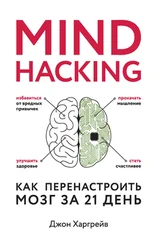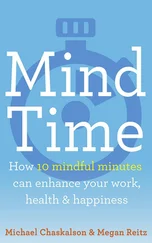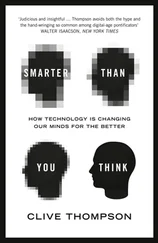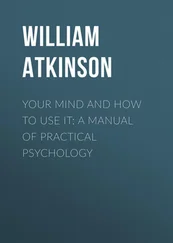Toyoda’s genius was not just around his inventions but also around his innovations in the process of manufacturing. To Toyoda, it was processes that failed, not people . When troubleshooting problems in his factories, he invented a technique known as the “Five Whys” to track a problem down to its root cause.
The technique is simple: when you encounter a problem in your factory, instead of beating the employee who’s responsible, you step back and answer the question “Why?” five times until you get to the deeper issue.
Let’s say you’re an automobile manufacturer. One of your new car models has a problem: under certain conditions, the gas tank explodes. While the natural response is to figure out a short-term solution (replace the gas tank, recall the cars, deny the story, etc.), the Five Whys discipline seeks to find the root (or roots) of the problem.
What’s the source of our exploding gas tanks?
1. We used a gas tank from a new supplier. Why?
2. Our old supplier could not deliver in time for production. Why?
3. Production was rushed to meet an accelerated schedule. Why?
4. Management wanted to accelerate the production schedule to impact end-of-year sales. Why?
5. Management bonuses are tied to annual sales.
By following this tree of “Why?” down to its roots, you can make changes that impact the entire system, that tackle the problem at the source , not at its result . Here, the result (exploding gas tanks) is just the surface of a much deeper problem (management gaming annual sales bonuses at the expense of safety). Problems usually manifest themselves far down the chain from where they started.
Note the “five” in “Five Whys” is somewhat arbitrary—it may take six whys, or four, to find the root problem. Usually, in fact, there are multiple roots to the problem, so you need to ask “Why?” down several divergent paths. The basic idea, however, is powerful: Continue asking “Why?” until you get to the source (or sources) of the problem, and fix the problem there .
Toyoda’s “Five Whys” technique was eventually embraced by the entire manufacturing industry as a best practice, and ultimately found its way to the modern corporate world as well. The company he founded, Toyoda Automatic Loom Works, lives on as the Toyota Motor Corporation, which makes some of the highest-quality automobiles in the world. 7
Now, let’s look at Charlie, a twenty-five-year-old programmer who has a pattern of not being able to hold a job: either he gets fired, or he quits.
Why can’t you hold a job, Charlie?
1. I can’t get along with my bosses. Why?
2. Sometimes I’m insubordinate. Why?
3. Now that I think about it, it’s more like I don’t want to be forced to do something I don’t believe in. Why?
4. Because I had to do that a lot growing up. I hated that my father was so dominating. Why?
5. Because it made me feel like I can’t be trusted to make my own decisions.
Like stepping through a program to find the faulty code, we’ve debugged one of Charlie’s negative thought loops—the hidden feeling that I can’t be trusted to make my own decisions —that manifests itself as insubordination, which ultimately leads to the pain of being fired.
Let’s take another example. Darla is a thirty-three-year-old mother of three who is afraid of walking alone at night:
1. I’m afraid of walking alone. Why?
2. I’m afraid someone’s going to attack me, and no one will be there to help. Why?
3. My older brother often scared and threatened me, which left me with a feeling of never being safe. Why?
4. Because no one was there to protect me. My parents didn’t take it seriously. They acted like I was overreacting, like I was the crazy one. And now I feel like the crazy one! Why?
5. Because I continually think that the world is not a safe place.
We’ve debugged a negative thought loop ( The world is not a safe place ) that can be reprogrammed with a positive thought loop ( I am safe in the world ). More on reprogramming in Section 2.4.
The goal of “Five Whys” is to keep the focus on you . Not on other people. Not on circumstances beyond your control. If you end up with an answer like Because my husband is a moron or Because I was born with bad luck , try again. Train your microscope on your own emotions, thoughts, and actions, and be ruthlessly honest with yourself.
Let’s take one more example. Ed is a forty-five-year-old project manager who suffers from depression. It’s not serious enough to seek professional help, but enough to impact his daily life. Two or three times a year, he cycles through a depression that feels like he is “swimming against a powerful current.”
1. I’ve had these depressive episodes since I was a teenager. Why?
2. It feels like all the happiness of life is gone. Why?
3. Life seems hopeless, out of control. Why?
4. Depression runs in my family. My aunt had it, my grandmother had it. I sound a lot like my aunt, actually. It shows you how it runs in the family. Why?
5. Well, I guess it’s just a part of me, who I am.
Aha! We’ve uncovered a problem loop ( I am a depressed person ) that is also a self-fulfilling prophecy. Because Ed sees himself as someone who goes through periodic cycles of depression, he becomes less likely to help himself when he feels a new episode coming on (say, by exercising or seeing a doctor). Thus, he is a periodically depressed person, caught in the buggy loop of bad thinking.
It’s true there is probably a physiological component to his depression, but we’re trying to get to the problem thinking that’s contributing to the pain. Since thoughts create feelings, 8focusing on the feelings can be a useful way of getting to the thoughts.
In fact, a great trigger for the “Five Whys” is when you notice a persistent thought . Instead of suffering through these anxious or depressing thoughts that won’t seem to go away, see them as red warning lights flashing on Toyoda’s assembly line. A persistent thought usually indicates a problem loop, and asking Why is this thought so persistent? as the first of your Five Whys can help you trace it back to its source.
By practicing the “Five Whys” on yourself, gently questioning each of your long-held beliefs, you can often find the root problem. If not, here’s a second method.
Method #2: Worst-Case Scenario
Much of our mental pain is based on fears of imaginary events that simply will never happen. This fear is often just beneath the surface, gnawing away at us. By exaggerating the fear, we can pull it out into the open. We do this by asking one question: What’s the worst-case scenario?
Let’s take the case of Francine, a twenty-eight-year-old receptionist. She finds herself stewing over a parking attendant who overcharged her earlier in the day and who then refused to refund the money. She “catches” herself obsessing over this small event hours later and determines to root out the problem thought.
Francine is self-aware enough to know that she has problems spending money: she hadn’t wanted to park in the garage in the first place. Spending money, especially unnecessary money, causes her anxiety.
So we ask her: What are you afraid of? What’s the worst-case scenario?
The worst-case scenario is that I spend too much money and can’t make enough to cover my expenses .
That’s bad, but we’re going for the absolutely worst case, so we encourage her to continue.
Читать дальше
![Джон Харгрейв Mind Hacking [How to Change Your Mind for Good in 21 Days] обложка книги](/books/404192/dzhon-hargrejv-mind-hacking-how-to-change-your-min-cover.webp)











